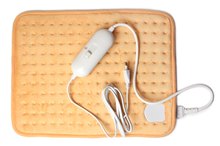Atkins Diet & Leg Cramps
The Atkins diet is a type of low=carbohydrate diet. Because of the restriction of carbohydrate intake, your body might begin to experience cramping in the extremities, such as the legs. The reason for this is mainly due to carbohydrate restriction but also might have other diet-related causes. Leg cramps can be painful and finding a solution is a priority.
If you are experiencing serious medical symptoms, seek emergency treatment immediately.
Signs
If you are following the Atkins diet, you might experience a change in how you feel throughout the first three to four days on the program. A common symptom is leg and muscle cramping. A leg cramp can be something as mild as a light discomfort from a pulled or pinched muscle to a cramp that causes muscle spasms and extreme pain. Most leg cramps begin in the calve area and feel like the muscle is extremely tense, making it hard to move or put pressure on. In some cases you might be able to see your muscle distort or twitch under the skin. A sharp, piercing pain might start in the muscle and branch out through the foot and leg. Your sciatic nerve, which lies in your upper hip, also might become aggravated, resulting in piercing nerve pain that can make walking challenging. Other areas that are prone to cramping include the hamstrings and quadriceps.
- If you are following the Atkins diet, you might experience a change in how you feel throughout the first three to four days on the program.
- Most leg cramps begin in the calve area and feel like the muscle is extremely tense, making it hard to move or put pressure on.
Causes
Supplements for Muscle Cramps
Learn More
There are several causes of leg cramps when you are on the Atkins diet. One of the main causes is ketosis. As your body makes the switch from burning carbohydrates for energy to using its own stored body fat, the body can start to turn to the muscles for added energy. Once your body adjusts to using fat as a fuel source, muscle cramping should subside. If you are exercising with the Atkins diet, you might increase your risk for leg cramping. Making sure you stay hydrated while on Atkins can help prevent leg cramps. Severe and even slight dehydration can cause a loss of salts, minerals and electrolytes, causing muscle spasms and cramping.
- There are several causes of leg cramps when you are on the Atkins diet.
- If you are exercising with the Atkins diet, you might increase your risk for leg cramping.
Solution
Because the pain of a leg cramp can be intense on Atkins, getting the muscles to relax is a priority. Stop your physical activity immediately and take a break. Make sure that you take your entire body weight off of the leg until the cramp subsides. Your first response might be to stretch the muscles to relive the cramp; instead, try to relax and keep your leg still until the cramping subsides. Once the spasm or cramping is over, slowly begin to stretch the area muscles – hold for a few seconds and repeat until you feel comfortable enough to walk again.
- Because the pain of a leg cramp can be intense on Atkins, getting the muscles to relax is a priority.
- Your first response might be to stretch the muscles to relive the cramp; instead, try to relax and keep your leg still until the cramping subsides.
Prevention
Foot Cramps & Stretches
Learn More
Make sure you are following Atkins properly and taking a daily vitamin supplement that includes potassium and vitamin E. Drinking at least eight 8-oz 1. glasses of water will help keep electrolyte levels up and keep fluid in your muscles and joints. Cramping should subside once your body adjusts to a low-carb lifestyle. If incidences of leg cramps persist beyond a few days or cramping last more than 30 minutes, seek medical attention.
Related Articles
References
- Atkins: Truths and Myths
- American Academy of Orthopaedic Surgeons: Muscle Cramp
- Low Carb Friends; Atkins Nutrition and Low Carb Diet Information; Jacqueline Eberstein, R.N.; March 20, 2000
- Young G. Leg cramps. BMJ Clin Evid. 2015;2015
- Jahic D, Begic E. Exercise-associated muscle cramp-doubts about the cause. Mater Sociomed. 2018;30(1):67-69. doi:10.5455/msm.2018.30.67-69
- Waters TR, Dick RB. Evidence of health risks associated with prolonged standing at work and intervention effectiveness. Rehabil Nurs. 2015;40(3):148-65. doi:10.1002/rnj.166
- Skogar O, Lokk J. Pain management in patients with Parkinson's disease: challenges and solutions. J Multidiscip Healthc. 2016;9:469-479. doi:10.2147/JMDH.S105857
- Hallegraeff J, De greef M, Krijnen W, Van der schans C. Criteria in diagnosing nocturnal leg cramps: a systematic review. BMC Fam Pract. 2017;18(1):29. doi: 10.1186/s12875-017-0600-x
- Mcdermott MM. Lower extremity manifestations of peripheral artery disease: the pathophysiologic and functional implications of leg ischemia. Circ Res. 2015;116(9):1540-50. doi:10.1161/CIRCRESAHA.114.303517
- Blyton F, Chuter V, Walter KE, Burns J. Non-drug Therapies For Lower Limb Muscle Cramps. Cochrane Database Syst Rev 2012; 1:CD008496.
- Grandner MA, Winkelman JW. Nocturnal leg cramps: Prevalence And Associations With Demographics, Sleep Disturbance Symptoms, Medical Conditions, And Cardiometabolic Risk Factors. PLoS One 2017; 12:e0178465.
- Allen RE, Kirby KA. Nocturnal Leg Cramps. Am Fam Physician 2012; 86:350
- American Academy of Sleep Medicine. Sleep Related Leg Cramps. In: International Classification of Sleep Disorders, 3rd ed., American Academy of Sleep Medicine, Darien, IL 2014. p.299-303.
- Maquirriain J, Merello M. The Athlete with Muscular Cramps: Clinical Approach. J Am Acad Orthop Surg 2007; 15:425.
Writer Bio
Julie Boehlke is a seasoned copywriter and content creator based in the Great Lakes state. She is a member of the Society of Professional Journalists. Boehlke has more than 10 years of professional writing experience on topics such as health and wellness, green living, gardening, genealogy, finances, relationships, world travel, golf, outdoors and interior decorating. She has also worked in geriatrics and hospice care.









